5.1 – Assumptions
We are at an exciting point now. The previous chapter helped us estimate (roughly) the corpus required for one to retire comfortably, without drastically changing the post-retirement lifestyle.
One can argue that certain aspects were overlooked while estimating the post-retirement corpus, which is ok for now because this helps us determine the retirement corpus on a conservative basis.
The idea, of course, is to understand personal finance so well that we can plugin things as we progress and eventually get the corpus number right.
In the previous chapter, we figured that we need roughly 7Cr by retirement; in this chapter, we address the technique to generate the same. It must be quite evident to you by now that to create the retirement corpus by the target retirement year; we need to make investments starting today.
The investments that we make today should ideally spread across multiple assets. This is called the multi-asset portfolio, which includes – fixed deposits, gold, real estate, equities, cash, and cash equivalents. The overall growth that you experience will then be an aggregate across all these assets.
Let me explain a bit more before we get back to the retirement problem. Assume your net worth is distributed across multiple assets –
- 50% of your net worth is invested in real estate
- 10% of your net worth is in the fixed deposit
- 10% of your net worth is from gold
- 15% of your net worth is in equities
- Cash is 15%
The numbers assigned are all arbitrary, to drive the concept, so don’t sweat over it 🙂
Now, each of these assets grows at a specific rate. Needless to say that the growth rates differ for each of these assets. The question is, what is the overall growth given this portfolio of assets?
To answer this, we need to have an expected growth rate for each of these assets.
My long term (10 plus years) growth expectation (CAGR) from these assets are as follows –
- Real estate – 8-10%
- Fixed Deposit – 6-7%
- Gold – 8-9%
- Equities – 10-11%
- Cash – 0% (in fact cash de grows if you consider inflation)
You can develop your own opinion on the growth rates for these assets by looking at the long-term trends and by developing an idea on their future performance. But here is an advise, when you work with predictions/projections of any sort in personal finance, always keep the number on a conservative basis.
For example, frankly, I know equities, in the long run, will do much better than 11% CAGR, but I’ll work with a 10-11% range. The advantage here is that you build a future based on conservative assumption, anything better is only a bonus.
Anyway, the overall portfolio growth in the sum product of the weight of each asset and the expected return. Therefore –
= (50% * 10% + 10% * 7% + 10% * 9% + 15% * 11% + 15% * 0) * 100
= 8.25%
So as you can see, the combined (diversified) portfolio with multi-assets, generates an overall return of 8.25%.
Of course, change in asset allocation has an impact on portfolio growth. We have discussed this multiple times, won’t get into that discussion now.
By the way, check this to know how people generally divide their net worth across a diverse set of assets –
The infographic above mainly talks about the HNI and above category; however, if you walk into any financial planning firm, you are likely to get a somewhat similar diversification plan.
While a multi-asset portfolio is highly desirable, we won’t get into that discussion just yet. This is slightly complex, and we are too early in this module to talk about it.
For the retirement problem, we will make one fundamental assumption. The assumption is that we will look at only equity for building the retirement corpus. The exposure to equity is in the form of making systematic investments in a growth-oriented equity mutual fund.
If you do not understand ‘systematic investments in a growth-oriented equity mutual fund’, then do not worry. Going forward in this module, we will discuss this in detail.
Since equity is the only asset we are dealing with in this retirement problem, we need to assign an expected growth rate to this asset. I think a 10-11% CAGR is a fair expectation, especially when the holding period is long, i.e. more than ten plus years.
So let’s work with this number for now.
5.2 – The setup
A quick recap of the retirement problem, before we proceed. In the previous chapter, we figured that we need funds to the tune of 7Crs to lead a comfortable retired life. We call this a retirement corpus. We defied ‘comfortable’ by ensuring we have at least Rs.50,000/- per month for the 20 years post-retirement.
The next step is to figure out how one can generate a retirement corpus. Remember, we are starting our journey to save for retirement today, and we have 25 years to build this corpus. Twenty-five years is 300 months.
For now, we will rely upon investing in an equity mutual fund, in a systematic way to generate this retirement corpus. To solve this problem, we need to make a few assumptions. They are –
- We have a steady job which pays us a salary every month
- We are employed until the year of our retirement
- Our primary savings vehicle is regular investments in equity mutual funds
- We get yearly hikes in our pay
- Every year we will increase the investments in equity mutual funds by 10%
- The increase in savings happens every January
I know many of you may be concerned with these assumptions here, especially about the job and the hikes, but then, that’s an underlying assumption, without which we cannot proceed 🙂
So how do these assumptions translate to action? Here is how it looks –
Let me explain this table. The very first row reads like this –
It is January, and I’m making my very first investment of Rs.5000/- today. I won’t be touching this investment until I retire, which is 25 years away or about 300 months away.
The 2nd row reads similar – Its February, I’m making the 2nd savings installment for the year, i.e. Rs.5000/-. Retirement is now 299 months away.
I want you to recognize the fact that the ‘months away’ can be looked at from a different perspective. If you realize, these are the number of months during which your money can grow. For example, the very first installment you make has the luxury to build (or compound) for 300 full months. The next month’s savings can grow only for 299 months, 3rd installment has only 298 months to grow. So on and so forth.
Now, the 5th and 6th assumptions state that we are increasing the savings rate by 10% every January. This means, if we are starting with Rs.5000/- for year 1, the 2nd year we bump this up by 10%, hence for the 2nd year we invest Rs.5,500/-.
This is how it looks –
The month counting continues the same way. For example, the Rs.5,500/- investment we make in the 2nd year January has only 288 months to grow or compound.
I hope you get this flow for now.
So what happens after you make these investments? Well, as per the assumption, each of these monthly investments we make, grows at 11% CAGR (compounded annual growth rate), for the respective months.
For example, the very first investment that we make, i.e. Rs.5000/- gets to grow at the rate of 11%, for 300 months. So what would be the value of this investment at the end of 300 months?
Well, by now, you should recognize that we can apply the concept of the future value of money and get the answer. The future value of money formula is –
Future value = P*(1+R)^(n)
Where,
Principal (P) = Rs.5000
Growth rate (R) = 11% per annum
Time (n) = 300 months. However, this formula considers time in years. Hence we need to express 300 months in years, therefore 300/12 = 25
= 5000*(1+11%)^(300/12)
=Rs.67,927/-
Let us do this for the 2nd installment as well; everything stays the same except for the time component –
= 5000*(1+11%)^(299/12)
=Rs.67,339/-
This is how the table looks –
Now, if you add up all the future values, you get the corpus accumulated for your retirement. Before I show you the number, what is your guess? Does Rs.5000/- as the starting amount make the cut? Do you think it gives you the target corpus of Rs.7Crs?
If you are doubtful, then you are right. It does not cut the mark. It’s way off the mark –
So what should we do? How do we ensure we reach the target retirement corpus? Well, we can do three things –
- We save for a much longer period, say 30 or 35 years. However, this may not be viable as we won’t have a sustainable source of income for these many years
- Increase the rate of return, maybe from 11% to 14%, but then is like robbing yourself of your future. So we won’t commit this sin
- Increase savings, this means a frugal life today for a comfortable and financially independent life tomorrow. This is an option we can work with this.
So from saving Rs.5000 per month, let us bump this up to say Rs.15,000/- per month. Here is how the numbers stack up –
There is a significant improvement, but still not close to the 7Cr mark. We can try this with Rs.20,000/-
As you can see, starting at Rs.20,000/- per month, we get close to the 7 Cr mark, which upon retirement will yield us Rs.50,000/- per month for 20 years.
5.3 – Are you serious?
Saving Rs.20,000/- a month, that too as a starting amount may sound crazy to many, especially for people who are just starting their careers. After all, you’ve just started your career, started seeing a steady cash flow, and you are expected to park the bulk of it for retirement?
How fair is that?
Before it demotivates you any further, let me tell you. It is not all that lousy 🙂
Let me make an assumption here; if you are starting your career now, then probably you are 24 or 25 years old. This means you have a long runway before you retire. Even if you retire by 60, you mostly have 35 years to retire.
Out of these 35 years of service, even if you invest for 30 years, you will be placed much better. You can choose to start with Rs.10,000/- per month. Check the snapshot –
Starting your career early, gives you two powerful levers to operate – time and money. You can start with a small amount and build on it, eventually, it will yield you a similar result.
What if you are in the middle of your career and you are looking at retirement sometime over the next 10 or 15 years? Well, unfortunately, you do not have many options except to save large chunks of your cash flow.
But remember, this entire conversation is an oversimplification to help us get started. There are many angles to this story. For example, you may acquire property by inheritance, which earns you a rental income for the rest of your life or you can get a huge lump sum amount at retirement, thanks to PF and stuff. This retirement amount gets parked in a savings account or a fixed deposit, which gives you yearly cash flow.
The objective of this module is to help you solve this puzzle so that you can plan your financials efficiently for yourself and your family.
5.4 –Next step
Irrespective of the lump sum cash or a yielding rental property landing up in your lap by retirement, investing in equity is something that you cannot miss. I firmly believe that ‘equity’ as an asset class will outperform all other assets and shine through. Equity has to be a part of your long term portfolio.
The best way to gain exposure to equity is by investing in mutual funds via a systematic investment plan. Of course, there are many other variants and techniques for this.
Given this, over the next few chapters, we will deep dive into mutual funds and get a thorough understanding of mutual fund investing. This discussion will include things like developing a mindset for mutual fund investment, building a mutual fund portfolio, goal-based portfolio, fund analysis, direct vs regular, growth vs dividends, etc.
Once we understand mutual funds, we will steer our way to learn other critical components of personal finance such as life insurance, health insurance, pension funds, EPF, ETFs etc.
So as you can imagine, we have a long learning path ahead 🙂
Key takeaways from this chapter
- In a multi-asset portfolio, the aggregate portfolio return is the sum product of the asset weight and the asset’s expected returns
- Equity exposure is a critical component in long term wealth creation
- Investing small amounts of money regularly leads to a massive retirement corpus



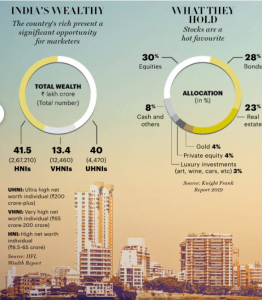
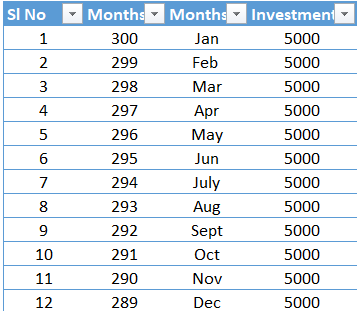
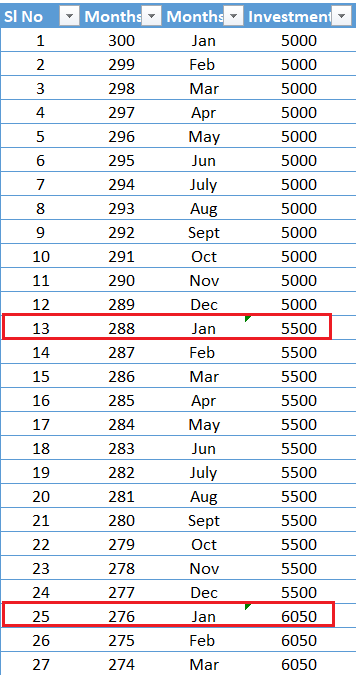
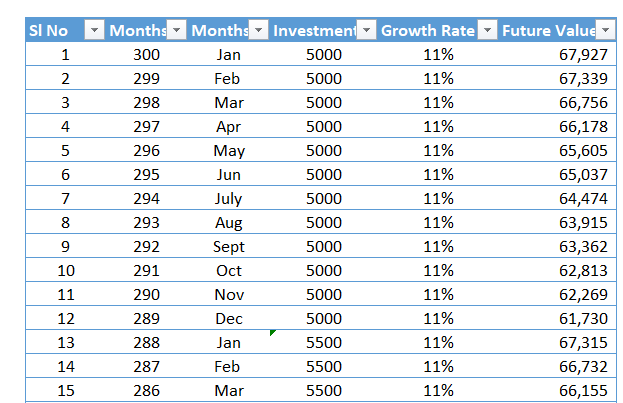
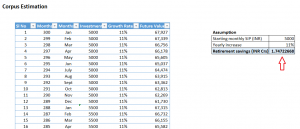
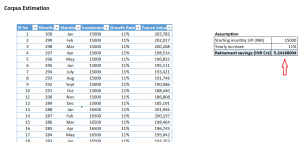
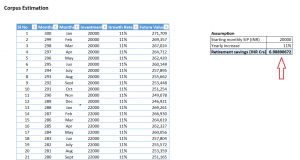
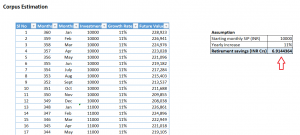
I have read all of your varsity modules!
I’m eagerly waiting for the mutual fund education. There are a lot of mutual funds out there and which makes it confusing to know where to park our money into. And how much tax do we have to pay for the interest we receive every year.
Glad to note that, Kunal. I will try and put up clear and non-confusing articles on MFs 🙂
Hi Karthik,
You have listed the importance of savings and investing your savings in a very effectively manner, The point I wanted to add was we even have PF’s which will also add a significant contribution to our final corpus – Do you like to and any points on the same.
Yes Punith, that makes a difference. I will include that in later topics.
The only drawback of Varsity is that you have to wait eagerly for the next chapter. I wish you can start like Binge reading in varsity!! 🙂
Great content Sir!!
Govil, I’ll take that as a compliment 🙂
Personal Finance is a much needed subject on wealth creation. Zerodha understood the need for such module and presented it in a simplied manner. Hope this module will covers all the relevant asset classes. Keep going Zerodha.
Yes, sir. We will 🙂
Sir, Thanks a lot for nice explanation.
There are 2 sheets are already available , however rest are not.
With Regards,
Ah, I may have forgotten to upload this. I’ll do it right away. Thanks.